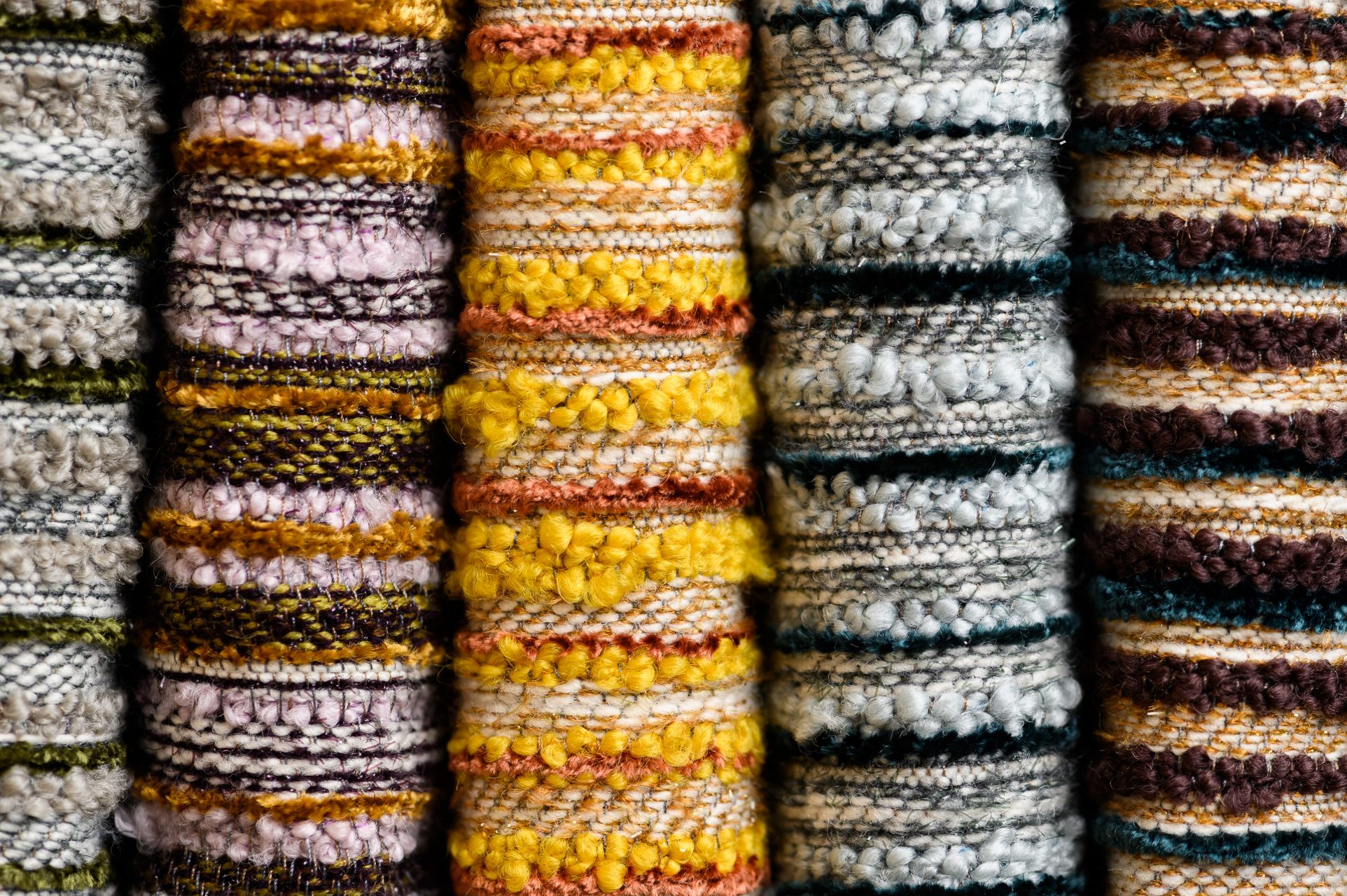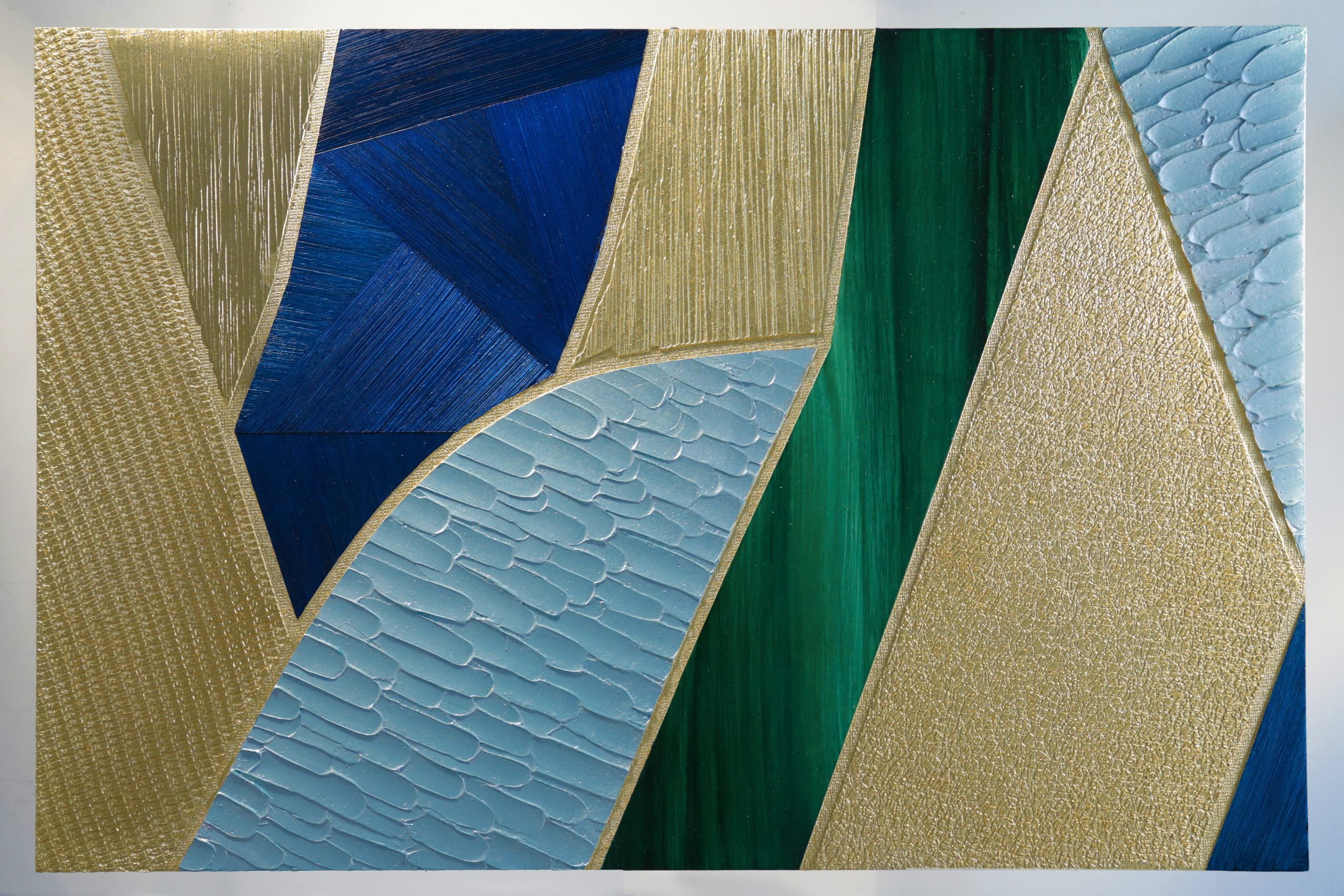How a Child of the World Revives the Art of French Weaving
A child of the world, Toyine Sellers was born in South Africa and has lived in Africa and the Americas. Thanks to her nomadic path, she learnt to observe nature and developed a curiosity for colours and textures that inspire her work. Her passion for textiles was born after 20 years of work as an interior designer for luxury boutiques.
In 2010, she took over an old weaving studio south of Lyon that was about to close and surrounded herself with a team of skilled weavers. She now creates high-quality fabrics in linen, silk, wool, mohair and leather.
Through her work, she allows the art of weaving to relive, develop and renew itself while promoting local and European industry.
Toyine, it was through your work as an interior designer that you discovered weaving and decided to make it your medium of expression. Were there any specific works or artisans that inspired you to take up weaving?
I was in South Africa when I encountered one of my first weavers. Her name was Coral Stephens, and she lived in Eswatini. I remember that she used mohair and that all her fabrics were hand-dyed. She collaborated with the textile designer Jack Lennor Larson, and we worked together on interior design projects while I was in Johannesburg.
Then later, in New York, I began working with Peter Marino. He used to keep archives of old fabrics, unique pieces from which we drew our inspiration. These pieces later served as references for textiles that we specified for our projects, especially for luxury boutique interiors, such as Chanel, Fendi and Dior. This approach inspired me further explore the weaving process.
How and with whom did you learn the tricks of the trade?
I have not really learnt the tricks of the trade as I don’t want to be limited by the technicalities of weaving. My training was done naturally, through encounters which showed me different parts of weaving. My asset is not my technical skills but rather my colour expertise, my sense of materials and my love for texture. Collaborating with weavers allows my artistic vision to come to life.
You have opened your studio close to Lyon due to the city’s rich history of weaving. Have you met traditional weavers in this region? Has there been a transmission of traditional skills? Do the artisans that work with you come from the region? What are their backgrounds and training?
I settled in the region by chance in 2010. I was looking for a loom model, which had not been in production since the 1960s. This search brought me to the Lyon vicinity where I found three of these looms for sale on a second-hand site.
Once I secured the looms, Eric, who had owned them previously, was my first weaver. From there, the numbers gradually grew: Aurélie, who was a florist at the time with no prior experience came on board. She was joined by Christian, who took over from Eric as our head of production. Then Valérie and, finally, Leslie who used to work with office automation equipment and was passionate about weaving.
How do you work? Do you receive a brief from the interior designer or artistic director? Do you then draw from your materials and samples to transform them and in turn create a new piece with your team?
A bit of both. We have a wide range of fabrics from which interior designers can select or change some aspects so that the fabric matches their project. Other decorators come to see us with a precise brief, and we create textiles based on the colours and textures they look for.
How does nature inspire you?
What is the link between the weaving thread that you choose for a project and the natural origin of this thread?
Nature is my main source of inspiration. I’m always observing the world around me when I’m home, in the studio, and also when I travel. My fabrics are a reflection of these impressions; the landscapes and the light find their way into my colours and textures. I am inspired by artists who are also inspired by nature, such as Peter Doig, Gerhard Richter and Per Kirkeby.
What materials do you use? Do you have a collection of samples?
We work as much as possible with noble materials such as silk, wool, linen, cotton and leather, sourced in Europe. We strive to preserve an industry that has been disappearing since the early 20th century by outsourcing the production to countries where labour is cheaper. At the beginning of the COVID crisis, this played in our favour as we could continue to work with our European suppliers.
Some fabrics contain fancy yarns – used in the fashion world – which are more fragile than standard furniture threads, but that give them a more distinctive look. Mohair is the only yarn that we source abroad, from South Africa – a nice reference to my home country.
We have a very large collection of samples. We add at least two new references each year, and, in total, we have between 400 and 450 samples in our current collection; plus a selection of bespoke and archived references.
How is your environment – Scandinavia, Lyon and certainly other places – part of your sources of inspiration? Do you have any examples?
I am constantly nourished by my environment, the things and colours that surround me. I am particularly interested in cooking and how a chef, like an artist, assembles tastes and hues on a plate. The process is very similar to my creative process – when I create, I compare it to cooking, where I combine colours and flavours so that the piece sings in my mouth and to my eyes. The creation of a fabric can be compared to the preparation of a dish: you adjust the recipe and the ingredients to achieve the right taste. It’s bespoke work similar to the one of a chef.
You also find inspiration in art and your next collection is inspired by the Swedish artist Björn Wessman. Is this normal for you? Do you have other artists and designers that inspire you?
I am particularly touched by artists whose work reflects nature like Björn Wessman. He had an exhibition in Sweden in 2018 that I went to see twice to soak up the mix of colours. I then contacted him, and we are regularly in touch with each other. Last summer, I also discovered a ceramist named Stefan Andersson, whose pieces also inspired the calmer tones of our new collection.
What do you mean when you say that every piece is “conceived and created like a work of art”?
When I start to create a new collection, I don’t look at trends but rather things and thoughts that have caught my attention during the year. This could be an object, a landscape, a hue, or a piece of wood found on the beach.
I design a fabric like a canvas. To create a fabric is to take a thought and put it on the loom – I never know where it will bring me, it’s constantly a surprise. The threads fuse together, naturally, to shape the final fabric like the colours on the canvas.
I only make what pleases me, but I also need to keep in mind that I create my fabrics so that others can use them. Therefore, there’s an initial creative explosion, which is the artwork, that I then adapt to create the final fabric.
What is the difference between art and craftsmanship for you?
Craftsmanship is a know-how – it is often an ancestral technique, a knowledge – and my nomadic spirit does not fit with this regulated way of doing things.
I need to be free to think and to act to give rise to what I call the ‘artistic explosion’. It is for this reason that I do not want to learn how to weave and why I bring something else to the creative process.
Do you believe that the arts and crafts that bring beauty into our daily lives are indispensable in society?
Yes, I think so. Europe has a reputation for its arts craftsmanship, slow and studied, and it is vital to preserving it in today’s world where everything appears and disappears so quickly. Arts craftsmanship allows the creation of something magical with an attention to detail and a love of the material that is inimitable. The arts craftsman pours their heart and soul into their creations and produces beauty that, according to me, is essential to our society today.










